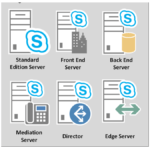With the increasing number of cybersecurity threats today, it’s important to take measures to protect your organization’s data and information. One such measure is to set up Azure AD Identity Protection. In this article, we’ll guide you through the steps to set up Azure AD Identity Protection and ensure your organization is secure.
- What is Azure AD Identity Protection?
Azure Active Directory (AD) Identity Protection is a cloud-based security service that helps to identify and respond to potential security risks. It uses machine learning and artificial intelligence (AI) to identify suspicious activities and vulnerabilities in your organization’s environment.
- Why is Azure AD Identity Protection Important?
Azure AD Identity Protection is important because it provides an additional layer of security for your organization’s data and information. It helps to detect and prevent potential attacks, such as phishing and brute force attacks. Additionally, it provides insights and recommendations to help improve your organization’s security posture.
- Setting up Azure AD Identity Protection
Setting up Azure AD Identity Protection involves the following steps:
Step 1: Sign in to Azure portal Sign in to the Azure portal using your administrator account.
Step 2: Create a new Azure AD Identity Protection instance Click on “Create a resource” and search for “Identity Protection.” Select “Identity Protection” and click on “Create.”
Step 3: Configure Azure AD Identity Protection settings Once the instance is created, click on “Configure.” You will see several options, such as configuring user risk policy and configuring sign-in risk policy. Configure the settings according to your organization’s requirements.
Step 4: Assign users to Azure AD Identity Protection To assign users to Azure AD Identity Protection, go to the “Users” tab and select the users you want to include in the protection. Click on “Assign to Azure AD Identity Protection” and save the changes.
Step 5: Monitor Azure AD Identity Protection Once you’ve set up Azure AD Identity Protection, it’s important to monitor it regularly. Azure AD Identity Protection provides reports and alerts to help you identify and respond to potential security risks.
Frequently asked questions
What is user risk policy in Azure AD Identity Protection?
User risk policy in Azure AD Identity Protection allows you to configure risk levels for users based on their behavior and activities.
Can I customize the Azure AD Identity Protection dashboard?
Yes, you can customize the Azure AD Identity Protection dashboard to display the information that is relevant to your organization.
Does Azure AD Identity Protection work with multi-factor authentication (MFA)?
Yes, Azure AD Identity Protection works with MFA to provide an additional layer of security for your organization’s data and information.
How often should I monitor Azure AD Identity Protection?
It’s recommended to monitor Azure AD Identity Protection regularly, at least once a week, to ensure your organization’s security posture is up-to-date.
Can I integrate Azure AD Identity Protection with other security tools?
Yes, you can integrate Azure AD Identity Protection with other security tools, such as Azure Sentinel, to provide a more comprehensive security solution for your organization.


